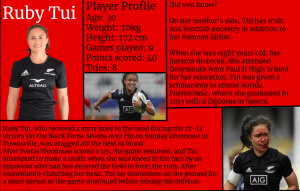Te Reo Animals
- Author By bpsellam
- Publication date November 27, 2023
- Categories: Hanga | Create
- No Comments on Te Reo Animals

Kia Ora!
Today I made a DLO on Ruby Tui!

Sorry if you can´t read it, I cant make it any bigger.
The giant moa was said to be an avian herbivore, and are thought to have been fed on a lot of different foods, most of which included flower, fruits, leaves, shoots, shrubs, seeds and lastly trees. But although the niche partitioning throughout moa is very badly understood.
Not much is well known about moa breeding. That’s because only around 30 moa eggs have been found. The largest moa egg is credited to the South Island giant moa, and the egg is 24-17.8 centimetres, the egg was found in a Māori burial site in Kaikōura, and the egg is significant as a Māori treasure, the egg is also one of the prime natural history items of New Zealand. Meanwhile the eggs of other moa species went as small as 12-9.1 centimetres, this egg is credited to the stout-legged moa.
The giant moa lays one abnormally large egg up to 7 inches in diameter and 10 inches long.
It’s estimated that the giant moa egg would have weighed 4kg fresh. 1-2 eggs would have been laid per breeding season, but for the larger eggs scientists estimate an incubation period for longer than 2 months.
Moa eggs are mixed from a bright olive green color to a lot of different shades of off-white. The thickness of the egg is a range of 0.50-1.89 mm. Although the moa eggshell fragments are abundant in New Zealand’s lots of natural and archaeological sites, whole moa eggs are rare and only 36 of them are known to date (11, 12).
When you think about the giant moa you probably think about ostriches and emus right? Well moa do look similar to ostriches, but different in a way. Among this species, a lot of individuals range in size from as big as a turkey to bigger than an ostrich; some moa stood as high as 10 feet, and they weighed around 250kg or about 550 pounds. The name moa came from a Polynesian word for fowl. Anyways, back to what the giant moa actually looked like.
The South Island moa was relatively tall, slender like moa, with a small, broad, flattened head, and robust, flattened, slightly curved bill. Females were markedly larger than males, being c. 150% in height and c. 280% in weight. Moa were able to fly but became flightless because they never flew. The reasoning for this is because where they lived they were safe from their predator, the haast eagle, who normally flew around in the sky.
Another reason for this is because their food was already on the ground so they didn’t have to fly anywhere to get it. They also nested in the ground so that’s another reason.
The Māori mainly hunted and killed the moa for food, while its bones were made into ornaments, fish hooks, bird spear points, ect. But the Māori killed the Moa using spears and traps to kill it. Within less than 150 years, the moa were destroyed.
According to radiocarbon dating moa species bones, the 9 different species very likely got wiped out by 1435 at the latest.
But they were rare decades before this, and had already disappeared from many places in New Zealand. Their last stand was more likely in the Nelson Mountains.
So, as you should know, the giant moa was a very fascinating, extraordinary bird. Now the giant moa has been extinct for around 600,000 years. (Fun fact!) The giant moa lived for only 50 years before disappearing.